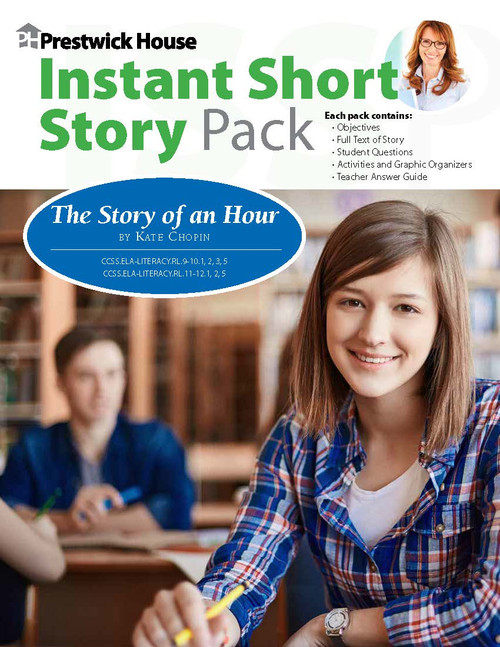Product Overview
Instant Resources for The Fly by Katherine Mansfield!
Whether you're looking for a short story to pair with the novel you're teaching, or you need a 2- to 3-day sub plan to use with the stories in your textbooks, Prestwick House Instant Short Story Packs go beyond basic comprehension to help students learn how to analyze literature.
Each downloadable pack addresses key skills through 5-10 standards-based analysis questions by guiding students through a series of scaffolding graphic organizers and in-class activities.
This Instant Short Story Pack for The Fly by Katherine Mansfield:
- Scaffolding graphic organizers and in-class activities
- Standards-based objectives
- Introduction and pre-reading notes
- Complete short story text
- Rigorous analysis questions
- Detailed teacher's answer guide
About The Fly
Katherine Mansfield wrote the “The Fly” in Paris while undergoing experimental treatment for tuberculosis. It was first published on March 18, 1922, in The Nation and Athenaeum, a liberal British newspaper more commonly called simply The Nation. “The Fly” was to be Mansfield’s last completed short story, as she died less than a year after its publication. Mansfield’s husband, John Murry, included the story in The Doves’ Nest and Other Stories, a collection of his late wife’s stories that he edited and published in 1923.
While the story was slow to gain critical attention, it has come to be considered one of Mansfield’s finest short stories. In her own lifetime, she was considered a realist, a naturalist, and a modernist. “The Fly” certainly contains elements of all three. There is nothing “decorative” or unessential in Mansfield’s depiction of a simple conversation between two old friends.
The Boss is both the victim and agent of the indifferent and uncontrollable forces that determine fate. The depth and richness of the story are to be found in the Boss’s inner turmoil—and by extension the fly’s—rather than in any external conflict. In fact, one reason the story seems so simple is that there is no external conflict involving any of the human characters.
Do not be distracted by the story’s deceptively simple plot, structure, and cast of characters. Almost a hundred years after its first publication, “The Fly” still puzzles critics who argue whether Woodifield or the Boss—or the fly—is the main character, whether the boss is a sympathetic character, and whether Mansfield intended the fly’s struggle to survive to mirror her own futile battle with tuberculosis.












